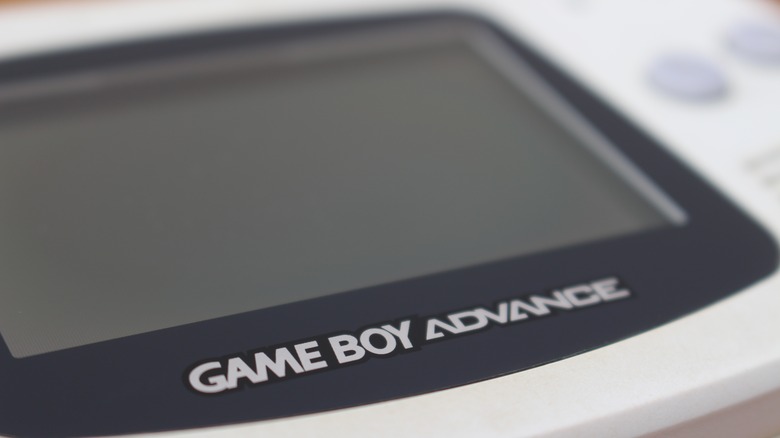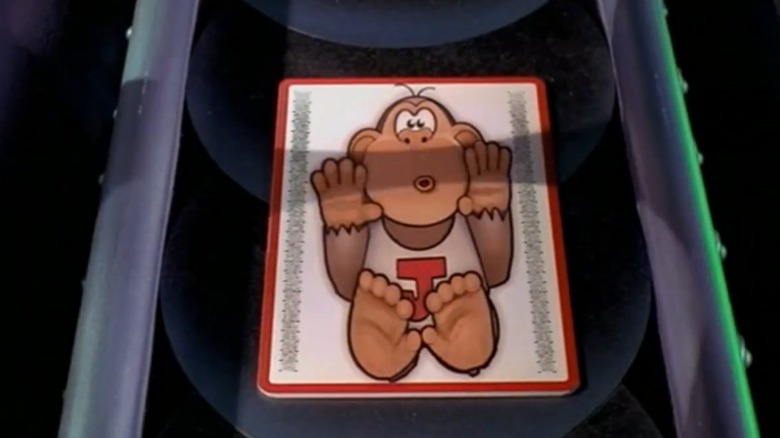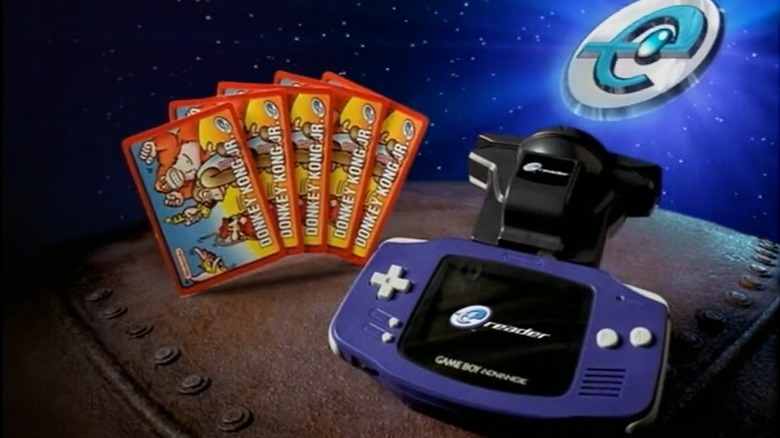Game Boy Advance E-Reader Never Caught On In The US, Despite Its Cool Features
The Game Boy Advance didn't move quite as many units as the original Game Boy or the even more popular Nintendo DS that followed, but it certainly held its own. An impressive 81.51 million consoles were sold worldwide. There were a lot of reasons why this upgraded handheld was so beloved. The library of games was obviously impressive and its graphical capabilities were certainly a step up, but there was also a wide variety of accessories that available for the console that expanded its capabilities. The GBA Link Cable and the Wireless Adapter allowed gamers to do things like trading Pokémon or challenging friends to battles, but there was one accessory that never really took off, even though it had some amazing features under its belt.
The Nintendo e-Reader released for the Game Boy Advance in Japan in 2001. This device optically scanned dot codes on cards which it would then translate into data to be uploaded to the handheld console. The idea was that people would buy the e-Reader which would come with a starter pack of cards, and then later purchase additional packs to expand their collection and even trade with friends. Each of these cards had different functions and some of them went a long way toward expanding the functionality of the GBA.
What kind of content could the e-Reader add?
There were a lot of different cards for the e-Reader and a few of them were pretty unique. Some added new content for compatible games, others contained special minigames, and some even had whole NES games like "Mario Bros.-e" and "Donkey Kong-e" that users could play on their handheld. Gamers would simply slide the cards through the e-Reader and it would automatically upload the game or bonus content to the system.
Some of the added content was pretty great too. There were new trainers for players to battle in "Pokémon Ruby" and "Sapphire," new items and special designs for "Animal Crossing," and even whole new levels and power-up items for "Super Mario Advance 4: Super Mario 3." One of the mini-games was an exclusive version of "Mario Party" that could only be played using the e-Reader.
This had all the mass appeal of a trading card game while simultaneously making it so players could experience unique content in their favorite games. It's not hard to see why the e-Reader did so well in Japan, so why did it never catch on in the U.S.?
Price and poor durability of cards may have contributed to low sales
The Nintendo e-Reader launched in North America in September 2002, but its run in the West was fairly short. It was discontinued outside of Japan in early 2004 due to low sales, and after several misleading announcements, its European launch was canceled (per Eurogamer).
It's hard to say exactly why the e-Reader did so poorly in America. One Reddit user commented on a thread about trying to preserve the device that, while the idea was ahead of its time, the actual construction of the cards could have used a bit more work. They pointed out that the reader itself was a bit finicky, stating, "any deformation in the cards (which was inevitable when you give them to children) caused read errors." It's possible that this lack of durability deterred some users from wanting to invest in the e-Reader.
It's also possible that the cost of the device itself was a deterrent. The e-Reader sold for $39.95. That's roughly the price of a brand new GBA game and each additional pack of cards cost the user another $4.95, so many players may have simply preferred to put their money into a new "Mario" or "Zelda" game instead.



